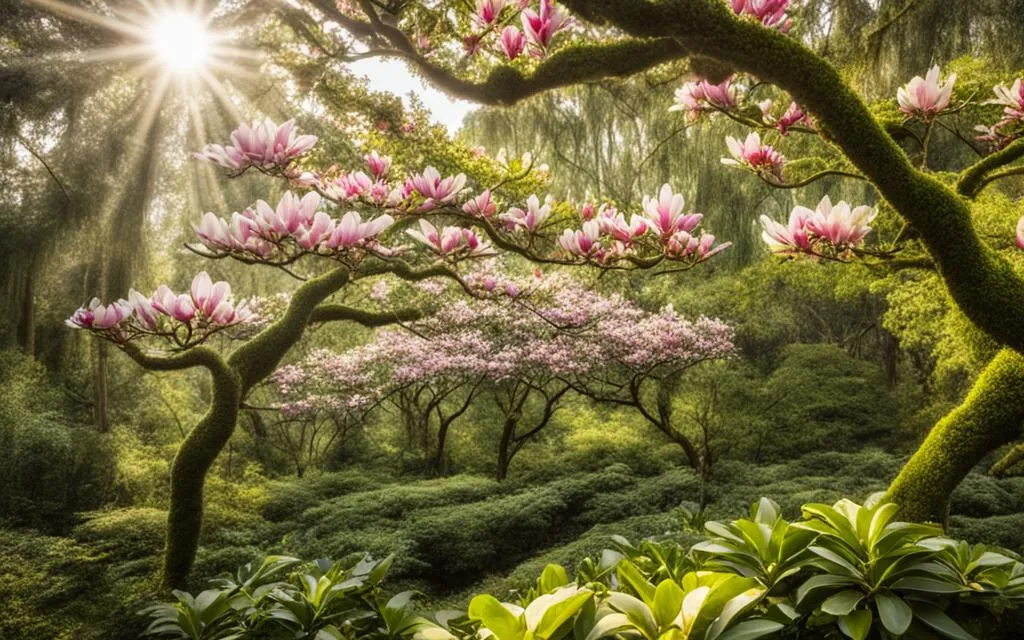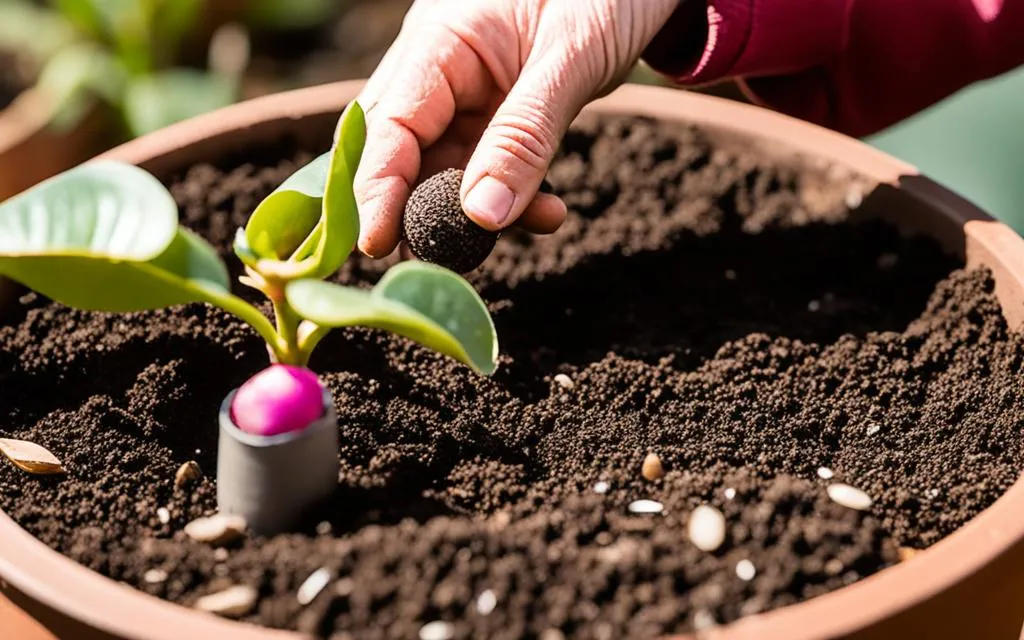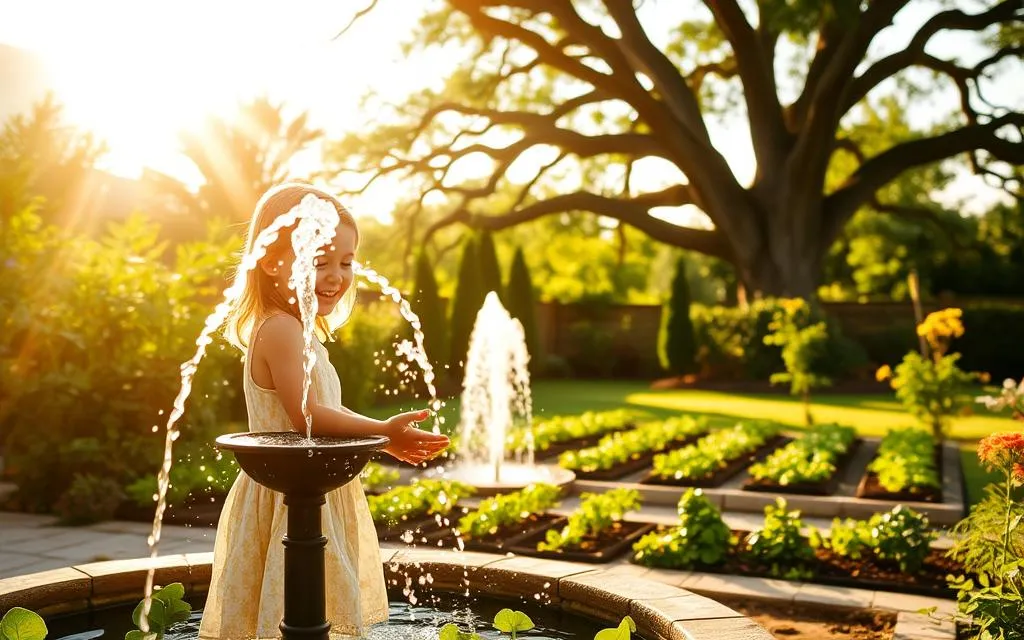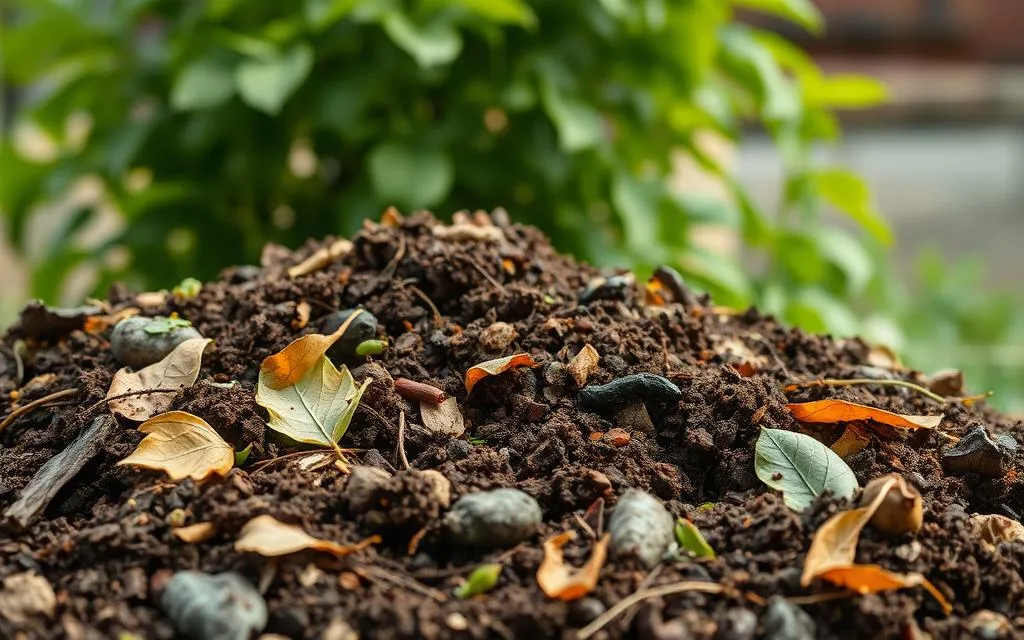How to Plant Magnolia Seeds – Are you drawn to the beauty of magnolia trees? Why not grow them from seed? Planting magnolia seeds is a rewarding journey that can lead to your own thriving trees. We’ll guide you through the steps to plant and care for these beautiful trees at home.
Magnolias are known for their timeless beauty, making them a favorite among gardeners. By learning how to plant and care for magnolia seeds, you can add these stunning trees to your garden. Let’s start the journey to grow magnolia trees from seed.
Table of Contents
ToggleUnderstanding the Magnolia Seed
Before we start planting, let’s look at the magnolia seed’s unique features. These seeds are shaped like an elongated cone. They have a hard, woody shell that keeps the delicate inner seed safe. It’s important to pick fresh, high-quality seeds for the best chance of them growing well.
Magnolia Seed Structure and Viability
The magnolia seed has a tough outer shell that covers a delicate inner seed. This shell protects the seed from harm and helps it last longer.
But, the shell’s condition affects how well the seed will grow. Seeds that are fresh and not damaged are more likely to grow well. Seeds that are older or damaged might not grow as well.
Ideal Time for Planting Magnolia Seeds
The best time to plant magnolia seeds is in the fall or early spring. These times have cooler temperatures and moist soil. This lets the seeds go through a process called stratification. Stratification helps break down the hard shell, getting the seed ready to grow. Planting seeds at these times can really help them grow well.
| Seed Characteristic | Description |
|---|---|
| Shape | Elongated cone |
| Shell | Hard, woody |
| Viability | Varies based on freshness and condition |
| Ideal Planting Time | Fall or early spring |
Preparing the Planting Site
Choosing the right spot is key to growing beautiful magnolia trees. They love soil that drains well and is rich in nutrients. It should also be a bit acidic, with a pH between 5.5 and 6.5. Picking the perfect spot is vital for your magnolia trees’ health and beauty.
Let’s look at what makes a good spot for magnolia seeds to grow and thrive.
Choosing the Right Sunlight Exposure
Magnolias need a mix of sunlight and shade. Find a place that gets full sun to partial shade. This mix is perfect for your seedlings. Don’t pick spots too shaded, as they won’t grow well.
Preparing the Soil
- Check the soil’s pH and adjust it to be slightly acidic, between 5.5 and 6.5.
- Add organic stuff like compost or manure to make the soil richer and better at draining.
- Make sure the soil drains well to stop water from pooling, which hurts seedlings.
Selecting the Right Location
Think about how big the tree will get when picking a spot for your magnolia seeds. Magnolias can get huge, so choose a spot with enough room. This way, they won’t get too close to buildings or other plants.
| Magnolia Variety | Mature Height | Mature Spread |
|---|---|---|
| Saucer Magnolia | 20-30 feet | 20-30 feet |
| Southern Magnolia | 60-80 feet | 30-50 feet |
| Sweetbay Magnolia | 10-20 feet | 10-20 feet |
By thinking about sunlight, soil, and space, you’re ready to pick the perfect spot for your magnolia seeds.
Gathering the Essential Supplies
To plant your magnolia seeds, you’ll need a few key items. You’ll need the right containers or seed trays and a good seed-starting mix. Let’s look at what you’ll need to get started.
Containers or Seed Trays
For containers, you have several options. Choose ones with drainage holes to prevent waterlogging. Seed trays, small pots, or recycled containers like yogurt cups or egg cartons work well. Pick a size that lets roots grow as the seedlings get bigger.
Seed-Starting Mix
The seed-starting mix is key for your magnolia seeds. It should have the right mix of moisture, air, and nutrients for them to grow. Don’t use regular potting soil because it might be too heavy or have things that can harm the seedlings.
With the right containers and mix, you’re on your way to growing your magnolia seeds. Paying attention early can really help your seedlings succeed.
How to Plant Magnolia Seeds
Planting magnolia seeds needs some prep work, but it’s easy. The secret to growing magnolia trees from seed is to stratify and sow them correctly.
Stratification Process
Magnolia seeds need a break from germinating, which is called stratification. This means keeping the seeds cold and moist for a while. Here’s how to do it:
- Put the seeds in a sealable plastic bag or a container with moist seed-starting mix or peat moss.
- Keep the bag or container in the fridge for 90 to 120 days. Make sure the mix stays moist but not too wet.
- Check the seeds often and add water if the mix gets dry.
Sowing the Seeds
After the stratification, you’re set to plant your magnolia seeds. Here’s what to do next:
- Fill your containers or seed trays with a good seed-starting mix that drains well.
- Plant the magnolia seeds about 1-2 inches deep, leaving a bit of space between them.
- Cover the seeds with more seed-starting mix, but don’t cover them too much.
- Water the soil gently, making sure you don’t move the seeds around.
Remember, how deep you plant the seeds is key for them to grow. Make sure they’re planted 1-2 inches deep. With the right stratification and planting steps, you’ll grow lovely magnolia trees from seed.
Caring for Magnolia Seedlings
After sowing your magnolia seeds, it’s key to give the right care to the seedlings as they grow. This means keeping the soil moist and the air around them humid. Taking good care of magnolia seedlings helps them grow strong and healthy.
Watering and Humidity Requirements
Watering magnolia seedlings right is crucial. Don’t let the soil dry out, as it can stress the plants and slow their growth. But, don’t overwater either, as it can cause root rot.
To keep the right humidity for magnolia seedlings, think about using a humidity tray or misting them often. This mimics the moist, humid environment magnolias love. By keeping the moisture right, you help the seedlings grow strong and healthy.
- Water the soil consistently, but avoid letting it become waterlogged.
- Use a humidity tray or mist the seedlings regularly to maintain high humidity levels.
- Monitor the soil moisture and adjust your watering routine as needed to keep the soil evenly moist.
By following these tips, you can help your magnolia seedlings grow into strong, beautiful trees.
Transplanting Magnolia Seedlings
When your magnolia seedlings grow too big for their pots, it’s time to move them. Make sure to handle their delicate roots with care. Picking the right spot and preparing the hole early helps your young trees settle well.
When to Transplant Magnolia Seedlings
Spring or fall are the best seasons to move magnolia seedlings. These times offer mild weather and active growth. Avoid moving them in summer’s heat or winter’s cold to prevent shock and slow growth.
How to Transplant Magnolia Seedlings
Transplanting magnolia seedlings needs a gentle approach. Here’s how to do it right:
- Carefully lift the seedling from its container without harming the roots.
- Prepare the hole by digging a bit larger hole and adding compost or organic matter.
- Put the seedling in the hole, making sure the root ball is level with the soil.
- Fill the hole with soil, pressing it down to remove air pockets.
- Water the seedling well, keeping the soil moist but not too wet.
- Add a 2-3 inch layer of mulch around the plant, but don’t touch the stem.
By following these steps, you can move your magnolia seedlings safely and give them a great start in their new spot.
Magnolia Seed Propagation Methods
Planting magnolia seeds is a popular way to grow these beautiful trees. But, there are other ways to grow magnolias too. These methods let us share magnolias with friends or grow more in our gardens.
There are several ways to propagate magnolias besides planting seeds. Let’s look at these methods and how to do them well.
Magnolia Cuttings
Taking cuttings from a magnolia tree is a good way to make new plants. You pick healthy stems and root them in a growing medium. With care, these cuttings can grow roots and become new trees.
Magnolia Division
Division is a good method for gardeners with big magnolia plants. You dig up the plant, separate the roots, and make new plants. It’s great for spreading magnolias in your garden or sharing with others.
| Propagation Method | Advantages | Disadvantages |
|---|---|---|
| Magnolia Seed Planting |
|
|
| Magnolia Cuttings |
|
|
| Magnolia Division |
|
|
Exploring these methods lets gardeners grow and share magnolias in new ways. Whether you take cuttings, divide plants, or stick with seeds, the key is to try, learn, and enjoy growing these beautiful trees.
Common Problems and Solutions
Planting and caring for magnolia seeds can sometimes be tricky. We might face issues like poor germination or pests. Knowing how to handle these problems can help our magnolia trees grow strong and healthy.
Troubleshooting Germination Issues
Germination problems can be a big challenge for gardeners. Factors like bad storage, not enough stratification, or wrong planting conditions can cause this. To boost your chances of successful germination, make sure to store seeds right and follow the right stratification steps. Also, the right soil moisture, temperature, and light are key for seed sprouting.
Addressing Pest and Disease Concerns
Magnolias can face pests and diseases that harm seedlings. Issues include fungal diseases like leaf spot or powdery mildew, and insect infestations like aphids or magnolia scale. To fight these, watch your plants closely and use organic pest control or fungicides when needed.
| Common Magnolia Pests and Diseases | Symptoms | Treatment |
|---|---|---|
| Leaf Spot | Circular, discolored spots on leaves | Apply fungicide, remove affected leaves |
| Powdery Mildew | White, powdery growth on leaves | Use baking soda or neem oil solution |
| Aphids | Small, sap-sucking insects on new growth | Spray with insecticidal soap or introduce beneficial insects |
| Magnolia Scale | Brown, oval-shaped insects on stems and leaves | Prune affected areas, apply horticultural oil |
By tackling common issues like germination and pests early, we can keep our magnolia trees healthy and thriving.
How to Plant Magnolia Seeds in the Ground
Planting magnolia seeds directly in the ground is a rewarding task for gardeners. It allows you to grow these beautiful trees from scratch. By following simple steps, you can plant magnolia seeds outdoors and watch them grow into mature trees.
Before starting, know the best conditions for planting magnolia seeds. Magnolias need well-draining soil rich in organic matter. They do well in full sun to partial shade. Choose a spot with the right amount of sunlight.
- Prepare the soil by tilling it 6-8 inches deep. Add compost or organic matter to improve its structure and fertility.
- Plant the magnolia seeds 1-2 inches deep and 12-18 inches apart, based on the tree’s mature size.
- Cover the seeds with soil and press down gently to ensure good contact.
- Water the area well, keeping the soil moist but not too wet.
- Use mulch, like shredded bark or woodchips, to keep moisture in and weeds out.
Growing magnolias from seed is slow, and it may take years for them to become full-sized trees. During this time, give them the care they need. This includes regular watering, weeding, and checking for pests or diseases.
By following these steps and providing the right conditions, you can successfully plant magnolia seeds. Enjoy the process of watching these majestic trees grow in your garden.
Magnolia Varieties and Their Seeds
Magnolias are diverse flowering trees and shrubs, each with unique traits. Their seeds vary in structure and appearance. Knowing about these varieties and their seeds helps gardeners pick the best for their gardens.
The Southern Magnolia (Magnolia grandiflora) is famous for its big, white flowers and cone-shaped seed pods. Its seeds are red or orange and have wings to help them spread in the wind.
The Saucer Magnolia (Magnolia x soulangeana) is loved for its sweet-smelling, pink and white flowers. Its seeds are smaller and less colorful than the Southern Magnolia’s, with a rounded shape.
Other magnolias, like the Star Magnolia (Magnolia stellata) and the Sweetbay Magnolia (Magnolia virginiana), have their own seed types. The Star Magnolia’s seeds are small and elongated. The Sweetbay Magnolia’s seeds are bright red and winged.
Knowing about magnolia seeds is key to growing them well. Choosing the right seeds for your garden increases your chances of a successful magnolia plant.

Conclusion
We now know how to plant and care for magnolia seeds. This guide has given us the knowledge and tools to grow these trees. It’s important to pick high-quality seeds and give them the right conditions to grow.
With the right care, we can enjoy the beauty of magnolias in our gardens for years. The summary of how to plant magnolia seeds and the key takeaways for growing magnolias from seed will help us. Magnolias will add beauty to our outdoor spaces.
Planting magnolia seeds takes patience and effort, but it’s worth it. Let’s start this journey and watch our magnolia trees grow. They will become beautiful parts of our landscape. The memories and joy they bring will last for generations.

















